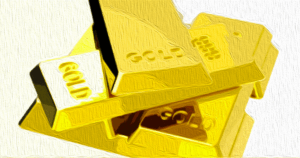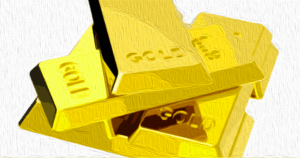
Introduction
The price of Bitcoin on January 24, 2024, displayed a complex pattern of market fluctuations and investor sentiment. The cryptocurrency demonstrated significant volatility, with prices ranging between $39,878 and $40,069 in the past hour and a broader range of $38,505 to $40,515 over the course of 24 hours.
Bitcoin Market Overview
Bitcoin currently boasts a market capitalization of $785 billion and a 24-hour trade volume of $27.02 billion. These figures highlight the continued dominance of the leading cryptocurrency in the market. While Bitcoin has experienced a 2.5% increase today, it has declined by 6% over the past week and 12% over the past two weeks, indicating a short-term recovery amidst a medium-term downtrend. Traders should carefully consider these fluctuations when devising their strategies.
Short-Term Analysis
On the 1-hour chart, Bitcoin demonstrates a recent rebound from the low at $38,505, reaching a high of $40,515. This suggests a potential short-term uptrend. The current consolidation phase, characterized by minor movements, indicates a temporary balance between buyers and sellers. Traders may consider entering the market if there is a breakout above $40,515, signaling the continuation of bullish momentum. Conversely, a break below the consolidation area could serve as an exit signal, indicating a weakening bullish trend.
Medium-Term Analysis
The 4-hour chart provides a more nuanced view of the ongoing downtrend, marked by a significant rise in prices from a low of $38,505. However, the presence of smaller dips suggests indecision among market participants. Cautious investors may choose to enter the market after a 4-hour candle closes above $42,152, indicating a potential shift in the short-term trend. Conversely, a drop below the significant low at $38,505 could prompt an exit, signaling a potential resumption of the downtrend.
Long-Term Analysis
The daily chart illustrates a pronounced bearish trend, with a high around $49,048 followed by smaller drops indicating strong selling pressure. The recent rise near $38,505, accompanied by increased volume, could indicate a short-term reversal or pullback. Traders may consider entering the market upon confirmation of a trend reversal, such as the formation of higher lows or a break above a key resistance level with substantial volume. An exit strategy could involve mitigating losses if the price fails to sustain the pullback.
Oscillators and Moving Averages
Oscillators provide insights into market momentum and potential reversals. The relative strength index (RSI) at 39 and the Stochastic at 9 indicate neutral conditions, with no clear overbought or oversold signals. The commodity channel index (CCI) at -118 suggests a bullish opportunity, while the momentum indicator at -1677 aligns with this view. However, the moving average convergence/divergence (MACD) level at -797 indicates selling pressure, resulting in a mixed overall signal.
Moving averages (MAs) offer a broader perspective on market trends. The exponential moving averages (EMAs) and simple moving averages (SMAs) for shorter periods (10, 20, 30, 50) indicate ongoing bearish activity, reflecting the recent downtrend. In contrast, longer periods (100, 200) suggest bullish sentiment, potentially signaling a reversal. This divergence between short and long-term averages highlights the current uncertainty in the market.
Bullish Outlook
Despite recent volatility, Bitcoin's technical indicators suggest a potential bullish trend in the near future. The ability of the cryptocurrency to bounce back from lower support levels, along with indications of a shift in market sentiment from oscillator readings and moving averages, demonstrates its resilience. Additionally, the increase in trade volume and stabilization near key resistance levels could attract more buyers, potentially driving prices upwards.
Bearish Outlook
Current technical analysis points to the continuation of a bearish trend for Bitcoin. The persistent formation of lower highs and high selling pressure, as depicted in the daily chart, indicate a strong bearish sentiment. Oscillator indicators like the MACD Level support ongoing selling pressure, while moving averages recommend a sell across shorter periods. The lack of a definitive breakout above major resistance levels and the potential for further downturns should be a cause for caution among investors.
Register your email here to receive weekly price analysis updates directly to your inbox.
What are your thoughts on Bitcoin's market action on Wednesday? Share your opinions and insights in the comments section below.
Frequently Asked Questions
What is a Precious Metal IRA and How Can You Benefit From It?
A precious metal IRA allows for you to diversify your retirement savings in gold, silver, palladium and iridium. These are “precious metals” because they are hard to find, and therefore very valuable. These metals are great investments and can help protect your financial future from economic instability and inflation.
Bullion is often used for precious metals. Bullion refers actually to the metal.
You can buy bullion through various channels, including online retailers, large coin dealers, and some grocery stores.
An IRA for precious metals allows you to directly invest in bullion instead of purchasing stock shares. You'll get dividends each year.
Precious metal IRAs do not require paperwork nor annual fees, unlike regular IRAs. Instead, you only pay a small percentage on your gains. You can also access your funds whenever it suits you.
What is the tax on gold in Roth IRAs?
Investment accounts are subject to tax based only on their current value and not the amount you originally paid. If you invest $1,000 into a mutual fund, stock, or other investment account, then any gains are subjected tax.
However, if the money is deposited into a traditional IRA/401(k), the tax on the withdrawal of the money is not applicable. Taxes are only charged on capital gains or dividends earned, which only apply to investments longer than one calendar year.
These accounts are subject to different rules depending on where you live. Maryland is an example of this. You must withdraw your funds within 60 calendar days of turning 59 1/2. Massachusetts allows you to wait until April 1. New York is open until 70 1/2. To avoid penalties, you should plan ahead and take distributions as soon as possible.
What are the pros and disadvantages of a gold IRA
An Individual Retirement Plan (IRA) has a major advantage over regular savings accounts. It doesn't tax any interest earned. An IRA is a great way to save money and not have to pay taxes on the interest you earn. However, there are also disadvantages to this type of investment.
You may lose all your accumulated savings if you take too much out of your IRA. Also, the IRS may not allow you to make withdrawals from your IRA until you're 59 1/2 years old. If you do withdraw funds, you'll need to pay a penalty.
Another problem is the cost of managing your IRA. Most banks charge 0.5% to 2.0% per annum. Other providers charge monthly management fees ranging from $10 to $50.
If you prefer your money to be kept out of a bank, then you will need insurance. A majority of insurance companies require that you possess a minimum amount gold to be eligible for a claim. You may be required by some insurers to purchase insurance that covers losses as high as $500,000.
If you decide to open a gold IRA, it is important to know how much you can use. You may be limited in the amount of gold you can have by some providers. Others let you choose your weight.
It's also important to decide whether or not to buy gold futures contracts. Physical gold is more costly than gold futures. However, futures contracts give you flexibility when buying gold. They allow you to set up a contract with a specific expiration date.
Also, you will need to decide on the type of insurance coverage you would like. The standard policy does NOT include theft protection and loss due to fire or flood. The policy does not cover natural disasters. If you live in a high-risk area, you may want to add additional coverage.
Additional to your insurance, you will need to consider how much it costs to store your gold. Insurance won't cover storage costs. Safekeeping costs can be as high as $25-40 per month at most banks.
To open a IRA in gold, you will need to first speak with a qualified custodian. A custodian maintains track of all your investments and ensures you are in compliance with federal regulations. Custodians cannot sell your assets. Instead, they must maintain them for as long a time as you request.
Once you have chosen the right type of IRA to suit your needs, it is time to fill out paperwork defining your goals. Your plan should include information about the investments you want to make, such as stocks, bonds, mutual funds, or real estate. Your monthly investment goal should be stated.
Once you have completed the forms, you will need to mail them to your provider with a check and a small deposit. After reviewing your application, the company will send you a confirmation mail.
If you are thinking of opening a gold IRA for retirement, a financial professional is a great idea. A financial planner can help you decide the type of IRA that is right for your needs. They can also help you lower your expenses by finding cheaper alternatives to purchasing insurance.
Is buying gold a good option for retirement planning?
Although it may not look appealing at first, buying gold for investment is worth considering when you consider the global average gold consumption per year.
Physical bullion bars are the most popular way to invest in gold. However, there are many other ways to invest in gold. It is best to research all options and make informed decisions based on your goals.
For example, purchasing shares of companies that extract gold or mining equipment might be a better option if you aren't looking for a safe place to store your wealth. If you require cash flow, gold stocks can work well.
You can also put your money in exchange traded funds (ETFs). These funds allow you to be exposed to the price and value of gold by holding gold related securities. These ETFs can include stocks of precious metals refiners and gold miners.
How to Open a Precious Metal IRA
It is important to decide if you would like an Individual Retirement Account (IRA). To open the account, complete Form 8606. You will then need to complete Form 5204 in order to determine which type IRA you are eligible. You must complete this form within 60 days of opening your account. You can then start investing once you have this completed. You might also be able to contribute directly from the paycheck through payroll deduction.
You must complete Form 8903 if you choose a Roth IRA. The process for an ordinary IRA will not be affected.
To be eligible for a precious metals IRA, you will need to meet certain requirements. You must be at least 18 years of age and have earned income to qualify for a precious metals IRA. Your annual earnings cannot exceed $110,000 ($220,000 if you are married and file jointly) for any tax year. Additionally, you must make regular contributions. These rules will apply regardless of whether your contributions are made through an employer or directly out of your paychecks.
You can use a precious metals IRA to invest in gold, silver, palladium, platinum, rhodium, or even platinum. However, you can't purchase physical bullion. This means you won't be allowed to trade shares of stock or bonds.
You can also use your precious metals IRA to invest directly in companies that deal in precious metals. This option is available from some IRA providers.
An IRA is a great way to invest in precious metals. However, there are two important drawbacks. First, they're not as liquid as stocks or bonds. They are therefore more difficult to sell when necessary. Second, they don't generate dividends like stocks and bonds. So, you'll lose money over time rather than gain it.
Statistics
- Gold is considered a collectible, and profits from a sale are taxed at a maximum rate of 28 percent. (aarp.org)
- The price of gold jumped 131 percent from late 2007 to September 2011, when it hit a high of $1,921 an ounce, according to the World Gold Council. (aarp.org)
- Contribution limits$6,000 (49 and under) $7,000 (50 and up)$6,000 (49 and under) $7,000 (50 and up)$58,000 or 25% of your annual compensation (whichever is smaller) (lendedu.com)
- If you take distributions before hitting 59.5, you'll owe a 10% penalty on the amount withdrawn. (lendedu.com)
- You can only purchase gold bars at least 99.5% purity. (forbes.com)
External Links
forbes.com
- Gold IRA – Add Sparkle to Your Retirement Nest Egg
- Understanding China's Evergrande Crisis – Forbes Advisor
irs.gov
bbb.org
law.cornell.edu
- 7 U.S. Code SS 7 – Designation of boards of trade as contract markets
- 26 U.S. Code SS 408 – Individual retirement plans
How To
Tips for Investing in Gold
Investing in Gold is one of the most popular investment strategies worldwide. Because investing in gold has many benefits. There are many options for investing in gold. Some people buy physical gold coins, while others prefer investing in gold ETFs (Exchange Traded Funds).
You should consider some things before you decide to purchase any type of gold.
- First, make sure you check if your country allows you own gold. If so, then you can proceed. You can also look at buying gold abroad.
- Second, it is important to know which type of gold coin you are looking for. There are many options for gold coins: yellow, white, and rose.
- You should also consider the price of gold. It is best to start small and work your way up. It is important to diversify your portfolio whenever you purchase gold. Diversify your investments in stocks, bonds or real estate.
- Last but not least, remember that gold prices fluctuate frequently. It is important to stay up-to-date with the latest trends.
—————————————————————————————————————————————————————————————–
By: Jamie Redman
Title: Bitcoin Technical Analysis: Understanding BTC's Market Behavior
Sourced From: news.bitcoin.com/bitcoin-technical-analysis-deciphering-btcs-complex-market-behavior/
Published Date: Wed, 24 Jan 2024 14:05:32 +0000
















